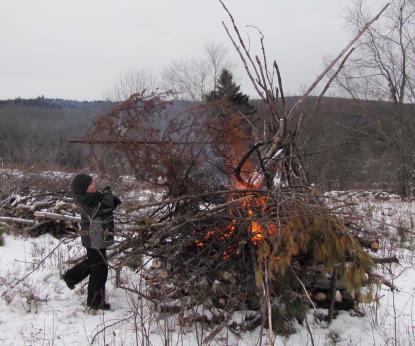According to an article in the October 28 Proceedings of the National Academy of Sciences (PNAS – pronounce as you see fit) by Van Le et al, primates appear to be hardwired to react quickly to snakes. Macaque monkeys raised without exposure to snakes have neurons that fire when shown snakes. The reaction does not resemble our reaction to other animals. The growth of these neurons is genetically encoded: primates don’t learn to fear snakes, they start out that way.
I have exactly zero evidence for this, but I wonder if we have a similar hardwired response to fire.
We are the only animals (so far) to partially harness the power of fire (if snakes figure out how to use fire, I quit). Early humans, certainly Homo erectus and possibly others controlled fire perhaps half a million years ago. Fire expanded the range of the human species into colder regions. It meant we could cook our food, killing off potential contaminants and making it tastier at the same time. Controlled fire transforms a cold, lifeless space into a home.
Semi-controlled fire can transform a space into a party.
No doubt this is why bonfires are burned around Guy Fawkes Night to celebrate the defeat of the Gunpowder plot. The conspirators wished to replace the protestant kind of England with a Catholic one.
In a typically perverse version of a bonfire, Texas A&M has long had an absurdly large bonfire to excite the students’ bloodlust before the football team plays the enemy: the Texas Longhorns. In 1999 twelve students died when the 59 foot high pile of logs collapsed shortly before it was burned. Although the fire no longer occurs on campus with University sanction, it happens off campus.
Probably the silliest bonfire is the burning man festival in which “the man” is burned in effigy for the 50 or 60 thousand annual attendees of the celebration of Radical Self-expression. It’s hard to imagine how “radical self-expression” doesn’t equate with jerk, but for some people it doesn’t.
My family now also has a yearly bonfire. My father clears a lot of brush during the year. He and my mother are maintaining a meadow around their house in New Hampshire. It gives them lots of blueberries and wildlife habitat. This means culling trees. Of course you could let fungus do the work of rotting the piles down. It would take decades, but the carbon dioxide would still return to the atmosphere. Meanwhile brush piles represent a fire risk in the summer. Uncontrolled fire doesn’t mean party, it means fear.

So we have a bonfire despite the environmental consequences (CO2 release, fine particulate matter that can irritate the lungs etc.). This year we added a twist, the eldest grandson got to add last year’s Christmas tree to the pile. Unlike some bonfires, we didn’t build a huge edifice then stand around to watch it burn. My father built a small stack. Once this was lit, we began adding the brush to the pile. A summer and fall’s worth of brush clearing disappeared in six or seven hours, but it was still hot the next day. As soon as it got to burning, my brother got thirsty and fetched some beer. Normally one in the afternoon wouldn’t suggest beer, but some basal brain function looked at the fire and thought “party.”


